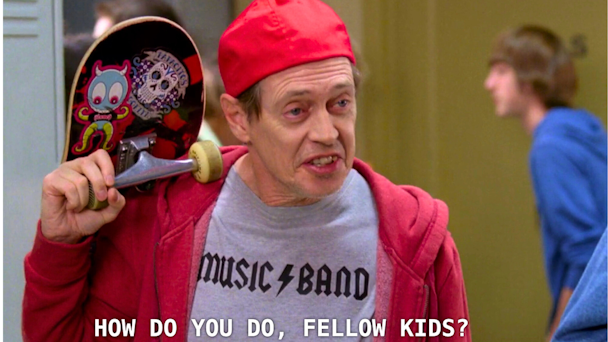How brands f*ck-up when working with ‘for youth, by youth’ communities
Seed’s Louise Millar knows a thing or two about how brands should operate in Gen Z spaces. She shares how a little respect goes a long way in getting the best outcomes when working with communities.

/ NBC
From music collectives to grassroots football teams, there’s been a meteoric rise in the establishment of ‘for youth, by youth’ communities in the past five years. Why? Because Gen Z, frequently dubbed the loneliest generation, craves connection and intimacy in the information age. And never more so than in a post-pandemic world.
Brands, savvy as ever, have been quick to partner with these communities as a way of driving credibility and awareness with difficult-to-reach youth audiences. From Boohoo to Bumble, from Nike to Northface, youth communities and collectives have become powerful marketing tools. So, as part of the latest What Matters To Us research platform, we talked to some of the most influential Gen Z communities around. From Black Girl Gamers through to Peng Femme Jam, they were happy to spill the tea on brands’ epic fails. Here are some of their pearls of wisdom:
1. Don’t tell me what to do: Jay-Ann from Black Girl Gamers, the platform that challenges sexism and racism in gaming, told me that she advises brands not to try and look smart but because she really knows the audience and how they’ll react. In short, she’s reminding us that she’s not a mouthpiece for hire but a source of wisdom. Brands that have their heads screwed on choose to partner with youth communities because they stand for something in culture. So it makes no sense for them to then try and mould what the community says on their behalf. Instead, accept that the communities know best and get behind them by investing in genuine collaborations.
2. Don’t start from scratch: Niamh and Charon of Hellaa Melanin, curators of safe spaces that celebrate blackness, got burnt when a brand dismissed their knowledge: “It wasn’t set up in the way we’d asked for, it wasn’t accommodated in the way we would want. So we had to bend over backwards to make it work. When you’re a small business, that’s a lot of work.”
When communities already have an established event format, trying to create something from scratch is a waste of time - both the brand’s time and the community’s time. So invest in what’s already there. It’s much more credible to elevate and champion an existing community event than doing a new branded version of it.
3. Don’t try to milk a one-way exchange: Peng Femme Jam, who fosters inclusive and nurturing spaces for marginalized musicians, is delighted to partner with brands who want to give more exposure to minorities. But that in itself is not enough. The partnership has to benefit that minority in a way that has tangible value beyond mere exposure. The very essence of ‘for youth, by youth’ communities is that they are circular. Each participant benefits from giving and receiving. And this is a fundamental principle that should be applied to brand involvement too. Exploiting a community for exposure is just not good enough.
4. Don’t think we work for you - this is our passion project: Some of the communities we spoke to expressed frustration at brands treating them like a supplier. DR3 Sounds - a ‘for student, by student’ club night - shared its disappointment when a brand promised to invest in return for co-signing an event, but then pulled out at the eleventh hour: “We had to redo the posters and didn’t get anything back. It was a big learning curve for us.”
These communities aren’t corporations. Brands pick them as credibility drivers but have to understand that youth leaders are investing their own time and resources in something they care about. So give them time, flexibility and collaboration. Support and empower them by supplying the tools they need but don’t already have. Anything less than that will upset the community and drive negative sentiment - and word spreads fast!
5. Don’t dick us around - give it to us straight: Lesser marketers may think investment buys power. But that power needs to be wielded wisely by being transparent and respectful. Set clear boundaries, clear intentions and clear comms. Be upfront about your objectives - it’s not off-putting, if anything they’ll appreciate the directness. These collaborations work best when the foundations are laid not just for a mutually beneficial relationship, but for friendship. Because, as Black Girl Gamers’ Jay-Ann reminded me, the community leader that you’re partnering with could well be a powerful ally or client at some point in the future. So disrespect them at your peril.
Brands that collaborate with ‘for youth, by youth’ communities can find a route into credibility and connection with hard-to-reach Gen Z audiences. It’s a shrewd move. But these communities are whip-smart. They are striving to achieve their long-term ambitions. And brands have an opportunity to play a positive part in creating that legacy. Conversely, poor behavior is an own goal. Treating youth community partners disrespectfully is going to be remembered more than the good deeds. Because, as we all know, people talk. So you’d better make sure they talk about your brand positively.

